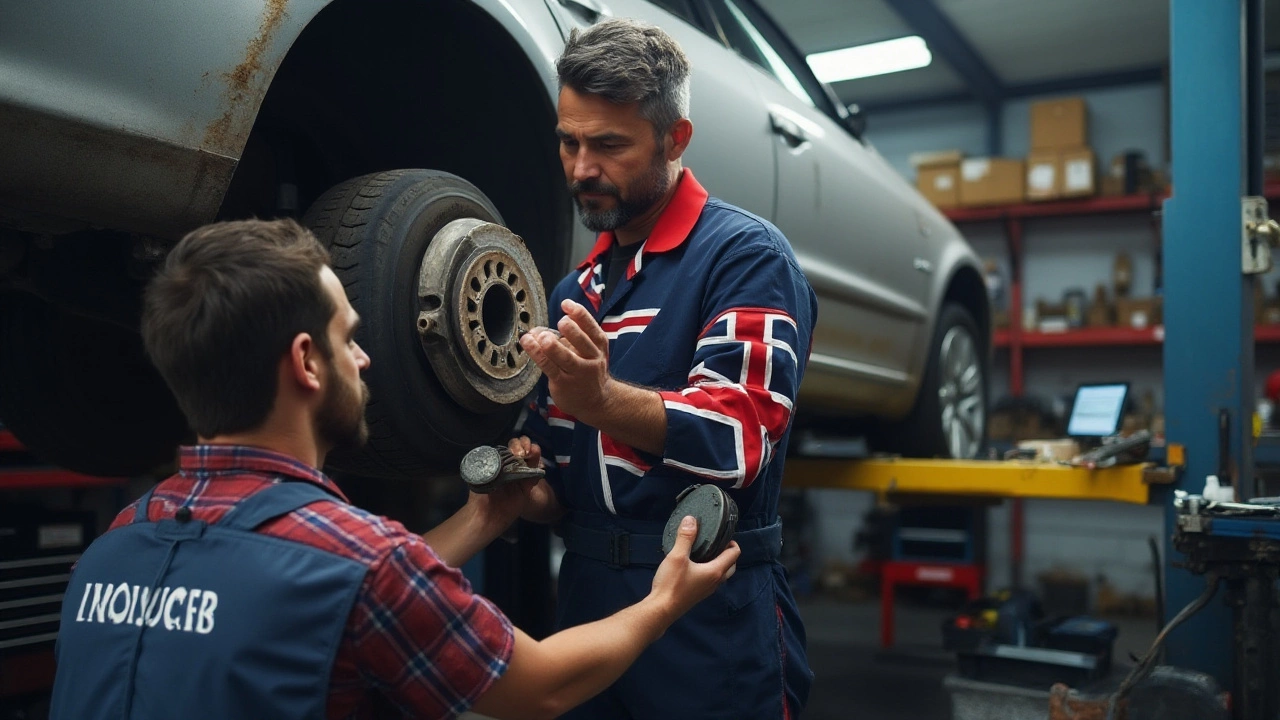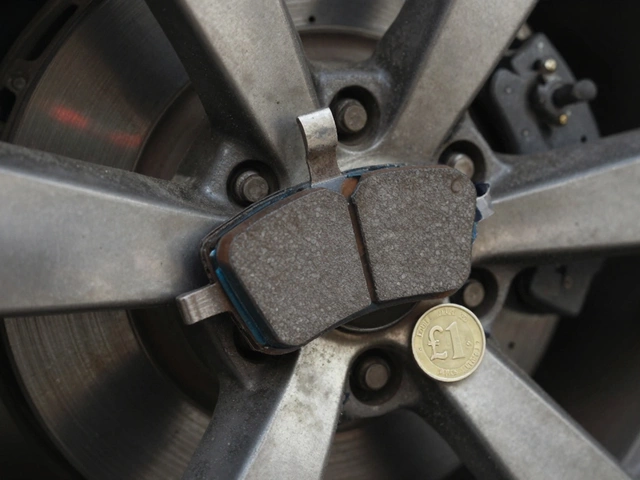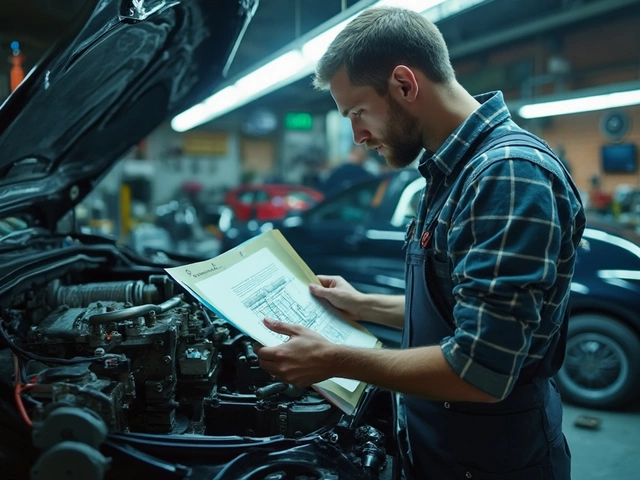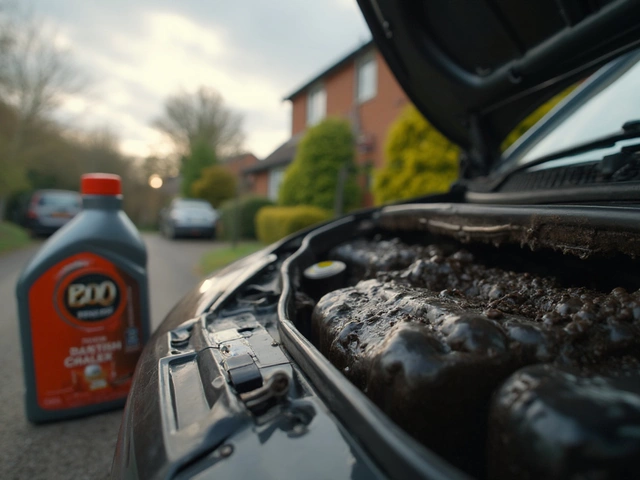Picture this: you're cruising down the road, music playing, everything seems perfect until unexpectedly, your car doesn't stop quite as smoothly as it used to. It might be an unsettling scenario, but it’s one that arises more often than you might imagine, often due to something as small yet vital as your brake pads.
Brake pads play a crucial role in vehicle safety, converting your car's kinetic energy into heat, allowing it to slow down or stop. But like any other component, they wear down over time, potentially compromising your safety if not addressed promptly. This article shines a light on the necessity of maintaining your brake pads, recognizing signs of wear, understanding the risks of driving on bad pads, and knowing when it’s time to consult a professional.
- Understanding Brake Pad Function
- Recognizing Wear and Tear
- Dangers of Worn Brake Pads
- Maintenance Tips for Brake Health
- When to Seek Professional Help
Understanding Brake Pad Function
The moment your foot presses the brake pedal, a remarkable sequence of events begins, powered primarily by the brake pads. These pads, though often humble in appearance, are the unsung heroes of your vehicle's braking system. Located within the caliper, they press against the brake rotor to create the friction necessary for bringing your car to a halt. Friction is key here; it transforms kinetic energy into heat, effectively bringing your vehicle to a stop. Without effective brake pads, the wheels would continue to spin unimpeded, posing a serious safety hazard.
When it comes to materials, brake pads are crafted from a variety of composites, each offering its own unique advantages. Ceramic, semi-metallic, and organic options cater to different drivers' needs, from performance enthusiasts to everyday commuters. Ceramic pads, for instance, are known for their longevity and quiet operation, while semi-metallic options are favored for superior heat dissipation. Understanding the various materials can help you make informed choices about what's best for your specific driving style and conditions.
The importance of brake pads extends beyond just stopping your car. They play a crucial role in the overall driving safety and maintenance of your vehicle. As these pads engage the rotors, they undergo substantial wear, which is a natural byproduct of performing their job effectively. However, as the material thins, the ability to generate friction diminishes, leading to potential dangers such as longer stopping distances and reduced braking power.
It's fascinating to note how much engineering has evolved to make these components both effective and durable. An intricate balance of chemistry and physics ensures they perform under extremes of heat and pressure. A well-maintained braking system can offer much-needed peace of mind. Regular checks and knowing the signs of wear can preempt any mishaps on the road. As one automotive expert aptly put it in a
"The brakes are the primary safety feature of your car, not a secondary option after having a fast engine."Understanding this core function sheds light on why brake maintenance is paramount to vehicle care.
Recognizing Wear and Tear
Every driver should recognize the signs of brake pad wear to maintain car safety. Fortunately, your vehicle often provides clear indicators when brake pads are nearing the end of their lifespan. One of the most common signs is a high-pitched squealing sound, which occurs due to the embedded wear indicators rubbing against the rotor. This sound acts as an auditory reminder that it's time to check your brake pads before they degrade further. Another symptom is a grinding noise, which might mean the brake pads have completely worn through, exposing metal-on-metal contact. Ignoring this symptom can lead to further damage to your vehicle's braking system.
Beyond sounds, there's a tell-tale vibration or pulsation in the brake pedal when you apply the brakes. This sensation, often described as 'pulsing,' occurs if the brake pads are worn unevenly or the brake rotors have been warped due to excessive heat. If you notice the brake warning light illuminated on your dashboard, it could also point towards worn brake pads. Although this light may indicate other issues, brake pad wear is one of the common causes. Regular inspection is crucial, especially if you notice your car taking longer to come to a halt during braking or feeling less responsive.
Among the less audible, but quite visible signs of wear is the thinning of the brake pads themselves. Over time, brake pads thin out, and if they're less than a quarter of an inch thick, they should be replaced. A quick visual inspection by peering through your vehicle's wheel spokes is often enough to check this. Another visual indicator is scores or grooves visible on the brake rotors. These often suggest that your brake pads are worn and causing damage to the rotors.
"The state of your brake pads acts as a key indicator of your vehicle's braking health," remarks David McWilliams, a professional mechanic with over 15 years in the field.To avoid costly repairs and maintain optimal driving safety, it's wise to respond to these signs as soon as they appear. Early attention to these details not only ensures longevity for your vehicle but also protects the safety of every ride.

Dangers of Worn Brake Pads
Imagine you're driving in the rain, your visibility is reduced, and you need your brakes to function at their best. However, worn brake pads might not provide the quick response you rely on. When brake pads are thin and exhausted, they reduce your car's braking safety, making it take longer to stop. This increased stopping distance can be crucial, especially when you're driving in conditions where quick response times are needed. Not only does this pose a risk to yourself, but it also endangers other drivers and pedestrians around you.
The science is straightforward. Brake pads grip onto the rotor to bring the vehicle to a halt. If they are worn out, this contact is compromised. Hence, the response time for your brakes is immensely affected, leading to the undeniable risk of accidents. A study by the Road Safety Foundation found that timely brake maintenance significantly reduces collision risk—highlighting just how vital it is to keep an eye on the condition of your brake pads. In some extreme cases, brake pads can wear down enough to cause metal-on-metal contact, leading to costly damage to the vehicle's rotors and potentially damaging the entire brake system if left unchecked.
Unexpected Costs and More
Let's not deny the financial burden associated with ignoring such maintenance. When brake pads become too thin, the rotor may need replacing, adding significant costs. As brake pads wear, they can also affect the function of other braking components like calipers and brake lines, leading to more extensive — and expensive — repairs. Preventive measures, like routinely checking the condition of your brake pads, can help dodge these unwanted expenses. A report highlighted that regular brake maintenance could save over £300 annually per vehicle on repairs. When you consider these potential savings, it makes regular check-ups seem even more sensible.
Matthew Soames, a specialist in automotive safety, once stated, "Ignoring the subtle signs of brake wear is like playing a dangerous game of chance with your life on the line."
As we continue to place trust in our vehicles, let’s remember that their upkeep directly influences the safety net they provide. Brake pads might seem like a minor component on the surface, but they are your front line defense when it comes on-road safety. So next time you hear a squeal or a grind, take a moment to consider how critical these small parts are to your safety, and perhaps schedule a check with your mechanic.
Maintenance Tips for Brake Health
Keeping your car’s brake pads in top shape is an essential part of ensuring your vehicle’s safety and performance. Regular maintenance not only prolongs the life of your brakes but also ensures that you have the peace of mind when driving. It's surprising how often brake maintenance is overlooked, despite its importance. Understanding some straightforward tips can make a world of difference.
Firstly, it's important to pay attention to any unusual noises. A high-pitched squeal means your brake pads are wearing thin. This occurs when the wear indicator on the brake pads starts to rub against the rotor, signaling it's time for replacement. Continuously ignoring this sound can lead to more severe damage and increased repair costs. Regular inspection by a certified mechanic can prevent such issues and keep your brakes in optimal condition.
Second, ensure to check the brake fluid as it plays a crucial role in hydraulic brake systems. Low brake fluid can lead to poor performance of your braking system. It's wise to inspect the brake fluid reservoir every few months, making sure the level is maintained between the minimum and maximum lines. Dirty or contaminated brake fluid should be flushed and replaced, a process that should be done every couple of years or as recommended in your vehicle’s manual. You might be surprised how much difference it can make to driving safety.
Besides regular fluid checks, pay attention to the brake pedal feel. A soft or spongy pedal can indicate air in the brake lines or issues with the brake fluid. On the other hand, a hard pedal might be a sign of a blocked brake line or a brake booster fault. Either scenario demands the attention of a professional to diagnose and remedy the situation quickly. Regular cleaning of your brake components, especially when living in a region with harsh weather conditions, can also help maintain the efficiency of your brake system.
Tire maintenance is just as vital since worn tires can affect how well your brakes work. Having good quality tires with sufficient tread depth supports better braking performance. Rotate your tires regularly to ensure even wear, and check the tire pressure to maintain optimal braking efficiency. It's all about creating a holistic approach to vehicle maintenance in which each part complements the other.
Lastly, the manner you drive can significantly impact the lifespan of your brake pads. Avoid abrupt stops and starts, as these cause excess wear on your brakes. Instead, anticipate traffic flow and brake smoothly. This approach not only saves on brake pad wear but also enhances fuel efficiency. "Eighty percent of drivers aren't even aware of brake wear signs until it's too late," notes automotive expert Darren Nash. This emphasizes the importance of being proactive rather than reactive when it comes to brake maintenance.
For those keen on keeping track of their brake health visually, consider installing a smart brake pad monitoring system. These systems display real-time data about your brake condition, helping you catch issues before they become significant problems. Although an initial investment, it can save on costly repairs down the line, ensuring your vehicle remains safe and roadworthy.

When to Seek Professional Help
As you navigate your daily grind, being attuned to the subtle signals your car sends can sometimes mean the difference between a quick fix and a costly repair. Finding the right moment to consult a mechanic about your brake pads can save you both money and stress. Bad brake pads are often easy to detect if you're vigilant about a few key symptoms. First and foremost, listen to your brakes. That screeching, grinding, or squealing noise when you apply your brakes isn't just white noise; it usually points straight to worn-down brake pads. It's akin to the material designed to protect you wearing thin, leaving metal to rub against metal, which is both damaging and dangerous.
The second indicator lies right under your feet. If you find that you have to press your brake pedal further towards the floor, or that it feels soft or squishy, these are classic signs your brake pads might be on their last legs. This feels different from the usual solid pressure you're accustomed to during braking. This might be paired with your vehicle taking longer to come to a full stop, or perhaps pulling to one side when you brake. These symptoms suggest that your brake pads are not evenly wearing or that there might be an underlying issue with your braking system.
The Importance of Professional Inspections
Routine checks are invaluable. During these scheduled maintenance checks, a professional can inspect all brake components, fluid levels, and the condition of your brake pads. Mechanics are equipped with sophisticated tools and expertise to catch wear indicators that most laypeople might overlook. An auto shop visit will include thorough tests for brake pad thickness and the overall efficiency of your brake system's functionality.Interestingly, according to a report by the National Highway Traffic Safety Administration, brake issues contribute to about 22% of vehicle crashes related to technical failures. This underlines why it's critical to address brake pad concerns promptly. Remember, your safety isn't just about spotting the issues—it's also about acting on them quickly.
"Ignoring the signs of worn brake pads can lead to catastrophic results," says Michael Dwight, a professional automotive engineer with over two decades of experience.Some folks believe they can put off maintenance due to the upfront costs, but the potential risks and dangers of driving safety are simply incalculable.
Finally, if your car features a brake warning light on the dashboard, never overlook this. Though some modern cars come equipped with warning sensors specifically for the brake pads, older models rely on the driver to catch these warning signs. Trust your instinct when it comes to your car’s health—the earlier you act, the safer you’ll be. Deciding to take professional advice is, undeniably, a step in the right direction for peace of mind and your vehicle’s longevity. Let experienced hands handle complex repairs and replacements while you gain comfort in knowing your car’s crucial components are in peak condition.


